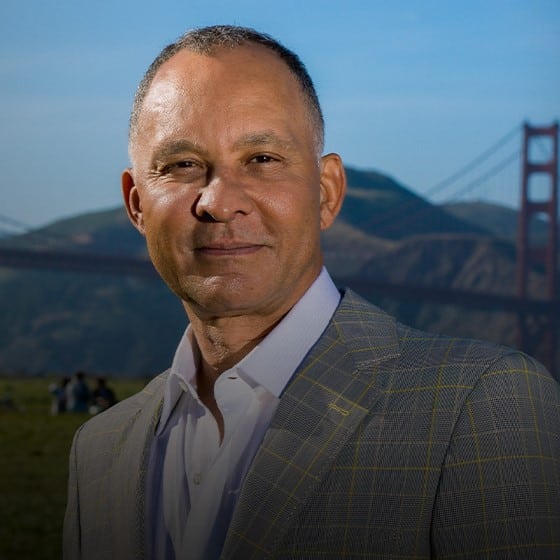What Causes Man Boobs: Understanding & Addressing Gynecomastia
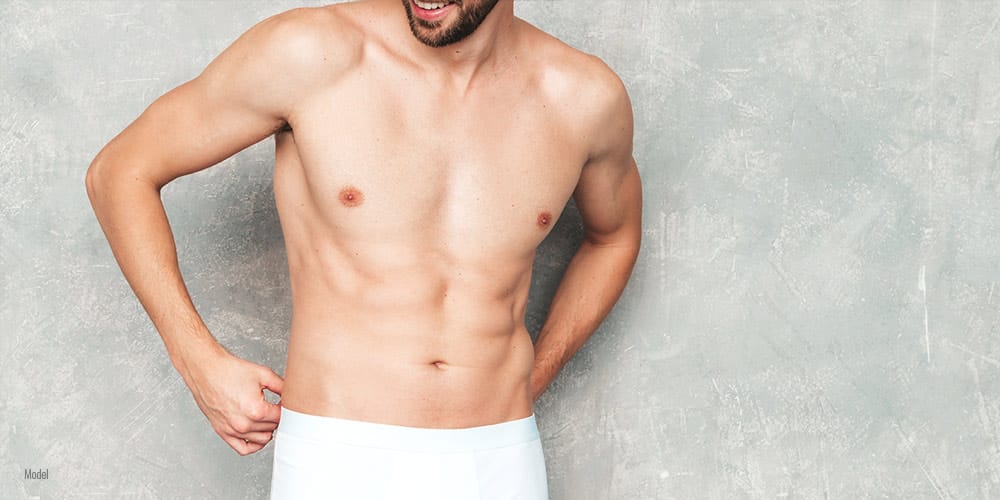
Man boobs, known medically as gynecomastia, are caused by various factors, including hormonal imbalance, medications, health issues, lifestyle factors, and genetics. To better understand what causes man boobs, this guide breaks down these causes to help you manage the condition effectively.
Key Takeaways
- Hormonal imbalances primarily cause gynecomastia or man boobs, which can arise from natural changes, health conditions, and medications.
- Lifestyle factors, including diet and exercise, play a significant role in the development and management of gynecomastia.
- Treatment options for gynecomastia include non-surgical methods like lifestyle changes and medications, as well as surgical interventions when necessary.
YOU TUBE: WHAT IS MANBOOBS
Understanding Gynecomastia
Gynecomastia is a medical condition characterized by the abnormal growth of breast tissue in males due to hormonal imbalance, leading to enlarged breasts. It is common, affecting approximately 35% of men, with the highest prevalence observed between 50 and 69. Gynecomastia can manifest in one or both breasts, and its severity can range from mild to severe. It impacts the individual’s physical appearance and emotional well-being.
Definition and Prevalence of Gynecomastia
Gynecomastia is prevalent across various age groups, but it is particularly common during certain life stages. For instance, more than half of male newborn babies experience temporary gynecomastia due to maternal estrogen. During puberty, hormonal imbalance can cause breast development in adolescent males, which often resolves on its own after puberty. In adult men, the prevalence of gynecomastia increases with age, especially between 50 and 69, affecting up to 70% of this demographic.
Hormonal Imbalance and Enlarged Breasts
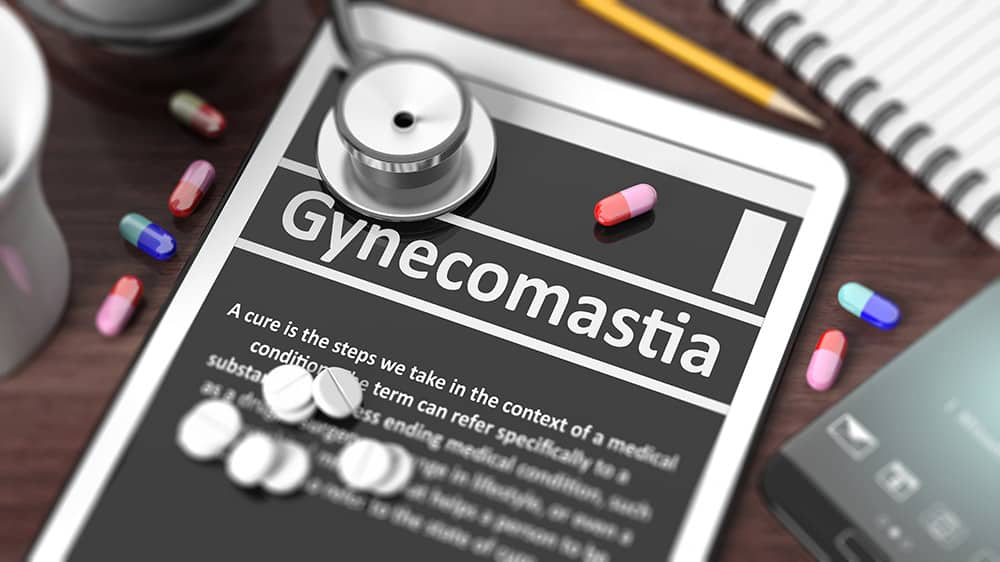
A primary factor leading to the enlarged breasts in males, known as gynecomastia, is a hormonal imbalance stemming from altered levels of testosterone and estrogen. An increase in estrogen or a decrease in testosterone may lead to this condition.
This disruption between hormone levels can be triggered by various medical conditions, specific medications, or natural changes within the body’s hormone production.
Natural Hormone Changes
During various stages of life, hormonal imbalance can have a profound impact on the growth of breast tissue in men. Hormonal fluctuations common during puberty may cause temporary gynecomastia, which typically resolves without intervention.
In aging males, particularly those carrying excess weight, hormone changes can be an influential factor in the development of enlarged breasts.
Health Conditions Leading to Gynecomastia
Conditions affecting the pituitary or adrenal glands may lead to hormonal imbalances, which can cause gynecomastia. For example, tumors like prolactinomas can alter hormone balance and contribute to gynecomastia. Similarly, testicular tumors can disrupt hormone equilibrium, increasing the likelihood of developing this condition.
Liver disease has a significant impact on how hormones are metabolized, and can disrupt the ratio between estrogen and testosterone in the body. Elevated levels of sex hormone-binding globulin associated with hyperthyroidism and chronic liver disease also play a role in exacerbating gynecomastia.
Medications & Substances That Trigger Man Boobs
Certain medications, recreational drugs, and alcohol can cause a hormonal imbalance, leading to gynecomastia.
Adjusting medications or reducing substance use can be other treatments to help manage and prevent gynecomastia.
Prescription Medications
Certain prescription drugs, including anti-androgens, medications for heart conditions, tricyclic antidepressants, and particular antipsychotics, may cause hormonal imbalance. This disruption can cause gynecomastia. Drugs like Spironolactone and Risperidone are known to be linked with the enlargement of male breasts.
Some medications that act similarly to estrogen — which include specific drugs used for treating heart ailments, as well as anabolic steroids — have been found to play a role in the development of breast tissue in males. Opting for different medication options could help mitigate this risk.
Recreational Drugs and Alcohol
The use of recreational drugs and overindulgence in alcohol can cause a hormonal imbalance, resulting in gynecomastia. Hormonal alterations that heighten this risk can be triggered by substances such as marijuana and heroin.
By reducing alcohol consumption and steering clear of recreational drug use, one can decrease the chances of developing gynecomastia.
Lifestyle Factors & Their Impact on Male Breast Growth
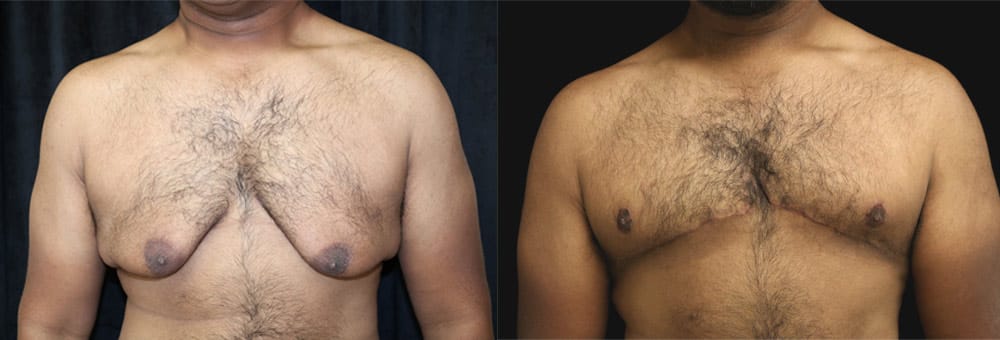
Hormonal imbalance can be influenced by diet and exercise, which play a significant role in the development of gynecomastia. Adjusting diet and incorporating regular physical activity can help manage and prevent this condition.
Maintaining a healthy weight and limiting alcohol and processed food consumption can reduce the risk of hormonal imbalances contributing to gynecomastia.
Diet and Body Fat

Consuming a diet rich in calories can lead to the accumulation of body fat, which can cause a hormonal imbalance, elevate estrogen levels, and lead to the development of gynecomastia. By adopting a balanced diet to lower body fat, hormones can be rebalanced, and the symptoms associated with this condition can be lessened.
Fruits and vegetables are low in calories and high in nutrients, water, and dietary fiber.
The interplay between dietary habits and body fat is crucial in understanding the onset of gynecomastia. These are key factors influencing estrogen levels in the body. Keeping a food journal can help provide insight into dietary habits.
Lack of Exercise
Hormonal imbalances linked to gynecomastia can result from inactive lifestyles. The lack of physical activity worsens the situation by promoting weight gain, which in turn continues to skew hormone levels.
Consistent exercise routines, especially those that focus on strengthening chest muscles, are beneficial for hormonal regulation and can prevent the development of gynecomastia. Cardiovascular exercise can help reduce overall body mass, and weightlifting can help reduce fat and increase chest muscles too.
Medical Conditions That Cause Swollen Breast Tissue
Medical issues including liver disease, kidney and liver failure, thyroid disorders, and certain tumors not associated with the breast can lead to a hormonal imbalance, resulting in an elevated ratio of estrogen compared to androgen. Treatments for prostate cancer, such as androgen deprivation therapy, can also lead to gynecomastia due to hormonal imbalances. This imbalance can lead to gynecomastia.
It is crucial to tackle these root causes when trying to control gynecomastia.
Liver Disease
Hormonal imbalance can be caused by liver disease, which shifts the equilibrium between testosterone and estrogen. When the liver fails, it is less effective at metabolizing hormones, leading to elevated estrogen levels.
Such a rise in estrogen may lead to the growth of excess breast tissue and swelling in this tissue, factors that play a role in the onset of breast enlargement.
Kidney Disease
Hormonal imbalances that result in gynecomastia can stem from chronic kidney disease, as malfunctioning kidneys interfere with hormone metabolism. Men suffering from renal complications may experience hypogonadism, which often leads to a deficiency in testosterone and increased levels of estrogen.
Hyperthyroidism
Hormonal imbalance caused by excessive thyroid hormone production in hyperthyroidism can increase the levels of sex hormone-binding globulin (SHBG), which can reduce testosterone’s effectiveness. The heightened SHBG caused by an overabundance of thyroid hormones affects how well testosterone works.
Consequently, individuals with hyperthyroidism might experience gynecomastia due to these disruptions in their hormonal balance.
Genetic and Rare Causes
Hormonal imbalance and rare conditions can contribute to the development of gynecomastia. Conditions such as Klinefelter syndrome and Androgen insensitivity syndrome may develop enlarged breasts in males.
It is critical to comprehend the underlying cause of these rare and genetic causes to create effective treatments.
Klinefelter Syndrome
Males with Klinefelter syndrome possess an additional X chromosome, which often leads to hormonal imbalance and the enlargement of one or both breasts due to hypogonadism and increased estrogen levels. These hormone changes cause hormonal imbalances that trigger atypical breast development in roughly 80% of those diagnosed with Klinefelter syndrome.
Androgen Resistance
Hormonal imbalance due to dysfunction in androgen receptors leads to androgen resistance, also known as androgen insensitivity syndrome. People with complete insensitivity to androgens might exhibit the growth of breast tissue alongside other female secondary sexual characteristics, even if they possess XY chromosomes.
It is vital to comprehend the nature of androgen resistance when tackling gynecomastia that stems from hormonal discrepancies.
Different Types & Grades of Gynecomastia
A hormonal imbalance often causes Gynecomastia, leading to the development of breast tissue in males.
Grades of gynecomastia as per the American Society of Plastic Surgery (ASPS) classification system are:
- Grade 1 – Small amount of breast glandular tissue with or without puffy nipples, often due to hormonal imbalance.
- Grade 2 – Mild to moderate enlargement of breast glandular tissue, often with fatty tissue, which causes male breast enlargement with a feminine appearance.
- Grade 3 – Moderate to significant enlargement of breast glandular tissue with fatty tissue, resulting in fuller male breasts.
- Grade 4 – Significant breast enlargement, with breast glandular tissue, fatty tissue, and excess skin, causing larger male breasts with a deep breast crease.
Symptoms of Gynecomastia: How to Identify Man Boobs
Breast Tissue Growth
The hallmark symptom of gynecomastia or man boobs is the growth of breast tissue, which can often be tender to the touch. This growth is typically the result of a hormonal imbalance, specifically an increase in estrogen or a decrease in testosterone. In some instances, gynecomastia may signal an underlying medical condition, such as a hormone-producing tumor in the pituitary gland or a genetic disorder, necessitating further medical evaluation.
Other Symptoms
In addition to the noticeable growth of male breast tissue due to hormonal imbalance, men with gynecomastia may experience various other symptoms, including:
- Swollen breast tissue
- Breast tenderness or pain
- Nipple discharge
- Breast asymmetry
- Emotional distress or embarrassment
It is important to distinguish gynecomastia from breast cancer, although having gynecomastia can slightly increase the risk of developing breast cancer in men. If you are experiencing any of these symptoms, it is crucial to consult a healthcare professional for an accurate diagnosis and appropriate treatment.
Risk factors for gynecomastia include:
- Hormonal imbalances
- Certain medical conditions, such as hypogonadism, hyperthyroidism, or liver disease
- Medications, such as anabolic steroids or anti-androgen medications
- Recreational drug use, such as marijuana or heroin
- Family history of gynecomastia
- Obesity or excess weight
If left untreated, gynecomastia can lead to significant emotional distress, low self-esteem, and decreased quality of life. In severe and rare cases however, it can also increase the risk of breast cancer. Therefore, seeking medical attention if you experience any symptoms of gynecomastia is essential for both physical and emotional health.
Psychological & Social Effects of Gynecomastia
Hormonal imbalance can lead to the condition of gynecomastia, which can cause considerable psychological discomfort and worry. The way individuals manage this condition is greatly influenced by both the availability of support networks and how society views the condition.
Acknowledging these elements is vital to ensure that those suffering from gynecomastia receive holistic care and assistance.
Self-Esteem and Mental Health
Individuals suffering from gynecomastia frequently encounter substantial emotional discomfort due to the appearance of their breasts, often caused by a hormonal imbalance. Studies indicate that there is a considerable impact on self-esteem for those afflicted, with psychological stress reported by approximately 95% of individuals with this condition. This strain can lead to diminished social interaction and a decline in life satisfaction.
It is essential to tackle the mental health concerns associated with gynecomastia. Resources such as Gynecomastia.org offer important support and foster community connectedness. Access to emotional assistance and therapy, provide guidance that can help improve both self-regard and mental health outcomes for those impacted by gynecomastia.
Societal Views on Man Boobs
Hormonal imbalance can significantly influence how society and culture view gynecomastia, affecting how those with the condition feel. There is a stigma attached to men who experience breast enlargement, which can lead to feelings of loneliness and emotional turmoil.
Support groups such as gynecomastia.org and Reddit become essential resources for dealing with these societal pressures. They offer comfort and critical knowledge to help individuals manage their difficulties.
Treatment Options for Gynecomastia (Surgical & Non-Surgical)
It’s crucial to be aware of the various options for managing and treating gynecomastia, which often results from a hormonal imbalance, including both non-surgical medical treatments and surgical interventions.
Non-Surgical Treatments
When overweight is an issue, lifestyle modifications, such as changes in diet and physical activity, may be advised to treat gynecomastia. If the current prescription contributes to the growth of breast tissue, switching to different medications can also be considered. Drugs like tamoxifen and raloxifene have shown efficacy for adults affected by gynecomastia.
Hormone therapy might be utilized when a hormonal imbalance affects estrogen and testosterone levels within the body. This approach aims to reduce the enlargement of breast tissue caused by imbalances between estrogen and testosterone concentrations, thereby enhancing one’s quality of life. Medical treatment of gynecomastia that has persisted beyond two years is often ineffective.
Surgical Procedures for Male Breast Reduction
If non-surgical methods do not achieve the desired results due to hormonal imbalance, surgical options may be explored. Techniques such as liposuction and excisional surgery are commonly used to remove excess breast tissue. These procedures, including male breast reduction, specifically target gynecomastia.
Surgery is typically considered for individuals whose gynecomastia has not improved with non-surgical treatments. Mastectomy, which involves removing glandular tissue, is usually performed with smaller incisions, making it a minimally invasive procedure.
The use of surgical interventions can successfully eradicate surplus breast tissue, significantly enhancing the contour and appearance of the chest.
The Best Men’s Shapewear to Hide Man Boobs
The quickest way to hide man boobs, or gynecomastia caused by hormonal imbalance, is with male compression vests, also sold as men’s shapewear. Male vests for man boobs compress the glandular and fatty tissue to make the chest look flatter. You can also buy men’s shapewear to compress your stomach area for an improved upper-body appearance.
The style of compression vest you choose depends on the size of your enlarged male breasts and the amount of compression required. Some men might find a compression vest that looks like a “normal” men’s vest is sufficient. However, if you have moderate to large man boobs, you may need to consider a compression garment that is more like actual underwear.
Three Popular Brands of Men’s Shapewear
Men’s shapewear has become increasingly popular, partly due to the rising awareness of hormonal imbalance and its effects on body shape. The good news is that many brands now produce high-quality compression garments. Below are five top brands that offer various styles of compression shapewear to wear underneath clothes.
Spanx
The Spanx men’s range includes stylish vests and T-shirt-style tops that are actually compression garments designed to address issues like hormonal imbalance.
Spanx shapewear, compression vests, and tops for men include:
- Compression crew neck style t-shirt
- Compression vest
- Compression tank top.
Now that you know which body shapers are the best shapewear for men, you can cut a svelte physique underneath your clothes.
Underworks
Underworks offer a choice of tops and vests marketed as medical-grade compression garments — available as vests and high-power chest binders designed specifically to hide larger man boobs, often caused by hormonal imbalance.
Underworks compression vests and chest binders include:
- Compression tank tops
- Chest binder compression tank tops
- Chest binder in a short, discreet low-neck vest.
Leo
Leo men’s shapewear is designed to address hormonal imbalances. It uses patented PowerSlim® and SkinFuse® seamless compression fabrics. Depending on the amount of flattening required, Leo offers a range of vests with different degrees of compression to provide extra strength.
Leo compression vests include:
- Body shaper vests with back support and maximum compression
- Tank tops with moderate compression
- Crew neck seamless tank tops with light compression.
How to Hide Man Boobs without Wearing a Man Boobs Vest
Hormonal imbalance is not the only way to hide enlarged male breasts. If you have grade 1 or 2 gynecomastia, you may prefer to use tape to strap down your man boobs. Companies now make tape marketed for hiding man boobs. Another readily available option is surgical tape. You may also decide to use tape to provide extra pressure under a compression vest if you have larger man boobs for additional chest flattening.
Best Clothes to Hide Man Boobs
Some men find compression vests or garments and tape uncomfortable due to hormonal imbalance. The alternative is careful clothing choices. Here are three things to look for if you want your clothes to hide man boobs:
- Color is one of the best ways to hide man boobs. Darker colors like dark gray, dark blue, and dark red can work, as well as black, of course.
- Fabric is essential. Clingy and thin fabrics will make man boobs more obvious. Choose structured fabrics, such as linen and heavier fabrics.
- Style and fit can make a real difference. The best way to hide man boobs is to wear a t-shirt under a loose-fitting shirt.
If you are fed up with trying to conceal enlarged male breasts, surgery for man boobs is the quickest, most reliable way to banish man boobs for good.
For personalized information about gynecomastia plastic surgery procedures, please complete Dr. Delgado’s inquiry form.
Prevention Tips: How to Reduce the Risk of Gynecomastia
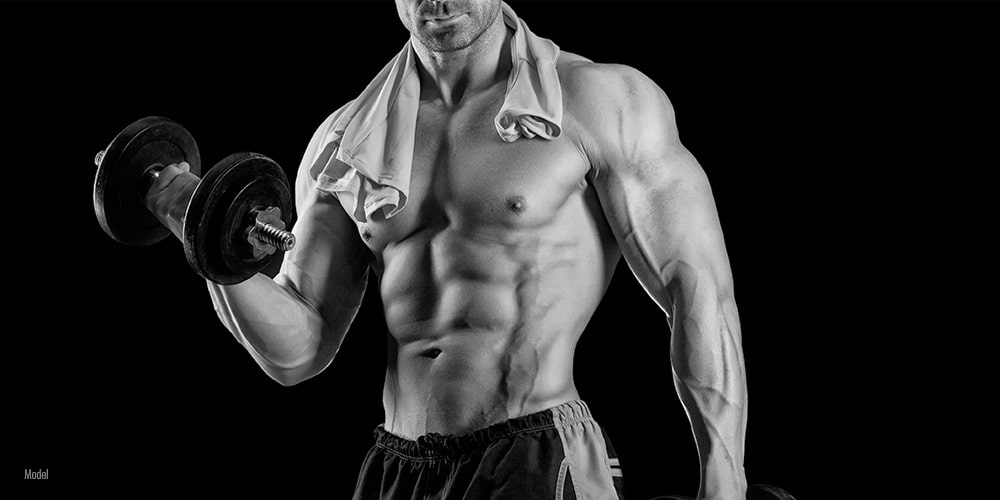
Preventing gynecomastia involves addressing hormonal imbalance through lifestyle modifications, avoiding certain risk factors, and managing underlying medical conditions. Maintaining a healthy weight and avoiding recreational drugs and excessive alcohol intake can significantly reduce the risk.
Maintaining a Healthy Weight
Staying committed to a well-rounded diet and consistent exercise regimen is essential for managing weight in a healthy manner. By achieving and maintaining a healthy weight, one can help prevent hormonal imbalance, enhance the aesthetic of their chest, build muscle, and reduce the risk of developing gynecomastia.
Avoiding Risk Factors
Controllable risk factors include lifestyle choices, medications, and substances that influence hormonal imbalance and gynecomastia. Avoiding recreational drugs and excessive alcohol consumption lowers the risk.
Weight loss management, diet, and exercise can significantly reduce the risk of gynecomastia and help you lose weight.
About Dr. Miguel Delgado – Gynecomastia Specialist

Board-Certified Expert in Male Breast Reduction Surgery
Miguel Delgado, M.D., F.A.C.S is a world-renowned Board-Certified Plastic Surgeon granted by the American Board of Plastic and Reconstructive Surgery and a member of the American Society of Plastic Surgery and Aesthetic Society. Dr. Delgado has a surgical practice solely dedicated to cosmetic plastic surgery. He specializes in gynecomastia surgery and is the medical director of Gynecomastia.org, the oldest and largest gynecomastia forum dedicated to supporting, educating, and providing solutions for men with breast enlargement. Dr. Delgado celebrates 30 years of practice in San Francisco, California. He was voted the “Best Plastic Surgeon in San Francisco” by San Francisco Magazine.
Summary – Understanding & Treating Man Boobs (Gynecomastia)
To summarize, the term man boobs is gynecomastia, which refers to the swelling of breast tissue in males. It is frequently linked to hormonal imbalances, certain drugs, preexisting medical conditions, lifestyle habits, and genetic factors. Tackling underlying issues, such as hormonal fluctuations and health-related disorders, is pivotal for effectively controlling this condition. A range of treatment methodologies—from noninvasive approaches to surgical procedures—are available that can alleviate symptoms and enhance the quality of life for those impacted.
It’s imperative to also grasp the mental distress and societal pressures associated with gynecomastia, to provide thorough support for sufferers. By sustaining a healthy weight level, steering clear of known risk elements, and applying strategic methods for disguising man’s belly when necessary, individuals might exert better influence over their situation. Additionally, consulting healthcare professionals, along with drawing on resources from communities like Gynecomastia.org offers both practical assistance and psychological reinforcement. Together, we can confront the difficulties brought about by gynecomastia, while aiming towards more effective management strategies and preventative measures.
Frequently Asked Questions
What causes gynecomastia?
Gynecomastia occurs when males develop enlarged breasts due to hormonal imbalances, particularly when estrogen levels surpass testosterone levels.
Contributing factors include medications, health conditions, lifestyle choices, and genetics.
Can gynecomastia go away on its own?
Gynecomastia frequently resolves spontaneously, especially if it occurs during puberty or is the result of temporary hormonal changes.
It is recommended to monitor the condition, as professional medical care might be required if it continues.
What are the non-surgical treatments for gynecomastia?
Non-surgical treatments for gynecomastia primarily involve lifestyle changes, medication adjustments, and hormonal therapies aimed at balancing estrogen and testosterone levels.
These approaches can effectively address the condition without surgery.
What surgical options are available for treating gynecomastia?
The main surgical treatments for gynecomastia include liposuction, excisional surgery aimed at eliminating excess breast tissue, and mastectomy to remove the glandular breast tissue.
Depending on personal requirements, these surgeries provide an effective solution to the condition.
How can I hide my man boobs?
To successfully conceal the appearance of man boobs, one could opt for compression vests specifically designed for men, employing specialized tape, or choosing garments tailored to mask their presence.
Employing these techniques can greatly improve your sense of self-assurance and comfort.
